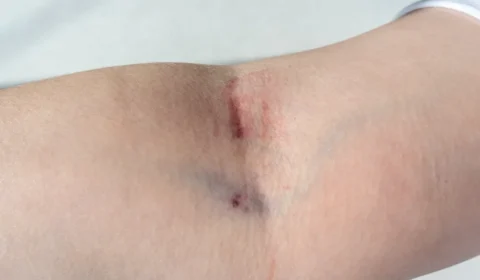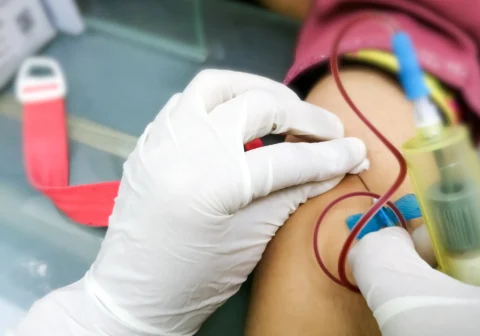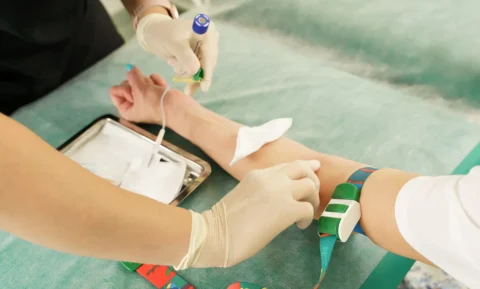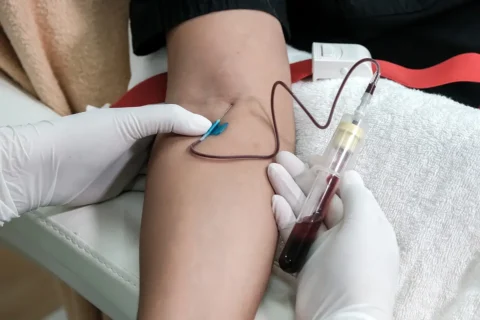Need to draw blood for a medical test or donation? Perhaps, you’re just brushing up on proper blood drawing technique with a butterfly needle? Butterfly needles provide a fast, relatively painless way to collect blood for most patients compared to straight needles.
However, improper technique can lead to complications like hematomas, hemolysis, and difficult venous access in the future. By following proper procedures, phlebotomists can ensure patient comfort while obtaining quality specimens for accurate test results.
Learn the best practices here to help avoid complications like contamination, hemolysis, and vein trauma. Follow along as we detail the ideal process for butterfly needle blood draws, from gathering supplies to dealing with potential issues.
Preparing for a Butterfly Draw
Before bringing the patient in, assemble all necessary supplies for safe, sterile venous access. This includes:
- Butterfly needle assembly with tubing – select gauge (21G-25G) based on vein size
- Alcohol pads and gauze
- Tourniquet
- Blood collection tubes with additives
- Sharps container
- Centrifuge
- Sterile gloves, goggles, face shields, and other PPE
- Labels, tubes, and order requisition forms
- Extra butterfly needle assemblies (to anticipate difficult draws)
Proper hand hygiene guidelines by the CDC and WHO should be followed prior to blood draws, including washing hands or using an alcohol-based sanitizer. Healthcare staff should also don PPE like gloves, lab coats, and goggles to prevent exposure to blood pathogens.
When the patient arrives, begin by verifying their identity by asking for their name and date of birth and having them sign consent forms. Take time to explain the procedure and address any questions or concerns they may have.
Nervous patients often benefit from distraction techniques during the blood draw. Provide positioning options such as being able to lie down.
Before venipuncture, have the patient drink fluids to optimize hydration and venous filling. Ask if they have any conditions like anemia or clotting disorders which could impact the blood collection. Select an appropriate vein based on visibility, size, and fragility.
Choosing the Right Vein for Butterfly Draws
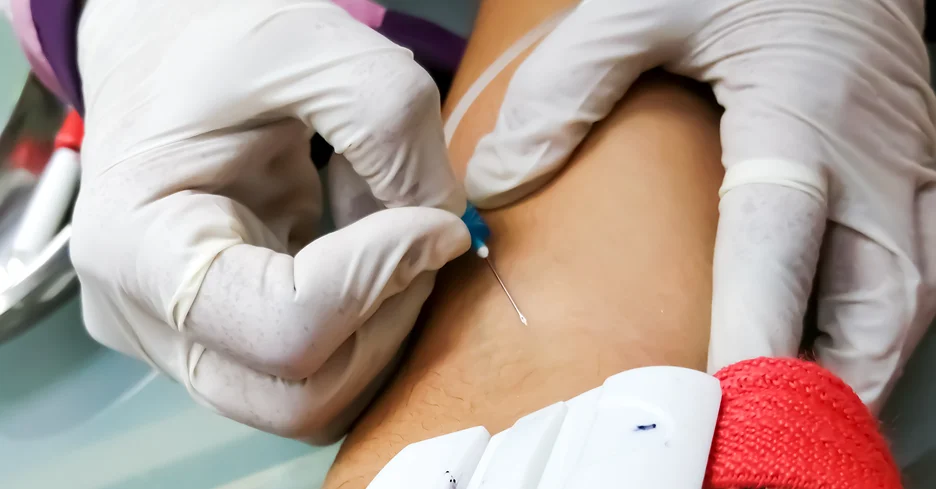
With their smaller needle size and flexible tubing, butterfly needles can access delicate veins that straight needles can’t. However, vein selection remains crucial for patient comfort and quality specimens.
The median cubital vein of the antecubital fossa is the most commonly used. Look for a thick, visible vein that straightens when the arm is extended. Other options include:
| Vein | Details |
| Basilic vein | Large vein on inner arm below cubital fossa |
| Cephalic vein | Outer arm vein running from wrist to bicep |
| Dorsal hand veins | Visible but fragile; use smaller needle (25G) |
| Scalp veins | Accessible on infants, elderly patients, and most people with small/fragile veins; use distracting techniques |
Choose the largest feasible vein for the butterfly needle gauge. More fragile or delicate veins require smaller gauge needles (23G-25G). This reduces the risk of trauma and hematoma formation.
Inserting the Butterfly Needle
Once an appropriate vein is selected, apply the tourniquet 3 to 4 inches above the venipuncture site. Have the patient make a fist to dilate the veins. Palpate the vein to note size, position, and any rolling or movement.
Prepare the skin using an alcohol wipe in a circular, outward motion. Allow the area to fully dry to prevent hemolysis from alcohol contamination of specimens.
Hold the butterfly needle just above the flexible tubing, with the bevel facing up. Approach from a 30 to 45-degree angle or less for shallow insertion. Anchor the vein by holding the skin taut directly below the venipuncture site.
In one smooth motion, pierce the skin and enter the vein in one advance. Entry depth should be only 1-2mm – the vein should not be probed or pierced fully.
Secure the needle firmly using sterile tape or your finger. Attach the first collection tube, allowing it to fill then inverting carefully. Monitor for adequate blood flow as you switch tubes, mixing additives properly.
Best Practices for Blood Collection
Butterfly needles enable multiple tubes to be drawn from a single venous access point. However, proper technique must be used to avoid complications:
- Maintain needle stability – Anchor appropriately and limit patient movement
- Invert tubes gently – Don’t shake or agitate blood samples
- Watch for slowing blood flow – If slow, discard and restart the draw
- Limit tourniquet time – Release after the last tube draws
- Choose thinner needles when possible – Use the smallest feasible gauge
- Limit repeated draws per vein – Stick each site only 1-2 times
- Label specimens clearly – Include patient identifiers and tests
- Handle tubes properly – After drawing, gently invert additive tubes
- Order of draw – Follow standardized tube order protocols
- Dispose of sharps immediately – Engage safety, discard in container
Consider these tips as well:
- Do not have the patient pump their fist as this can cause hemoconcentration
- Fill aerobic blood culture bottles first when using a butterfly needle to remove excess air in the tubing
- Use a shallow 10-15 degree angle when inserting the butterfly needle
- Apply gentle pressure when removing the butterfly needle and engage the safety device if available
Proper blood collection technique preserves sample integrity for accurate test results while avoiding patient discomfort.
Aftercare for Butterfly Draws
Once sufficient blood is collected, remove and discard the tourniquet before withdrawing the butterfly needle. Apply gauze with gentle pressure at the venipuncture site as the needle is removed. Engage the safety release mechanism on the butterfly needle to prevent accidental sharps injury.
Instruct the patient to continue holding pressure on the gauze until the bleeding stops. Monitor the site for any swelling or leakage suggestive of a hematoma. Large bruises may necessitate medical evaluation.
Finally, label collection tubes per protocol and complete any lab requisition paperwork. Centrifuge samples before analysis as needed. Document the procedure, samples obtained, and any complications in the patient’s medical records.
What special considerations should be made for elderly patients?
As we age, our veins often become more fragile and easily damaged. Phlebotomists must take extra care when drawing blood from elderly patients using butterfly needles. Follow these guidelines:
- Use smaller gauge needles (23G-25G). The flexible tubing allows access with thinner needles that minimize trauma.
- Beware of medications that increase bleeding risk like blood thinners or aspirin. A hematoma is more likely.
- Monitor for signs of dizziness or fainting. Have them lie down if needed and provide fluids.
- Alternate positioning like lying down can be better tolerated if unable to sit for long.
- Apply tourniquets gently and remove promptly after the draw to avoid bruising the thinner skin.
- Consider using infrared vein finder technology to locate veins
- Avoid adhesive bandages. Use paper tape and gauze instead.
- Limit the amount of blood drawn to avoid depletion.
- Insert the needle at a shallow 10-15 degree angle.
- Anchor the vein gently with your thumb when accessing fragile veins.
- Do not tap or massage veins to avoid bruising.
What modifications should be made for pediatric patients?
Children require special techniques like distraction and topical anesthetics to reduce the fear and discomfort of blood draws. Here are some pediatric best practices:
- Use toys, stories, and bubbles to distract and calm pediatric patients before and during the draw. This reduces movement.
- Warming the site with a heated pack can help dilate veins for easier access.
- Choose smaller gauge needles which minimize pain and reduce vein trauma in younger patients.
- Shallower and slower needle insertion is less painful. Insert only 1-2 mm into the vein.
- Draw blood quickly in as few tubes as possible to avoid excessive movement.
- Topical anesthetics like lidocaine cream can numb the skin prior to venipuncture.
- Positive reinforcement with rewards like stickers or treats encourages cooperation.
Ensure Effective Blood Draws – Stock Your Phlebotomy Toolkit
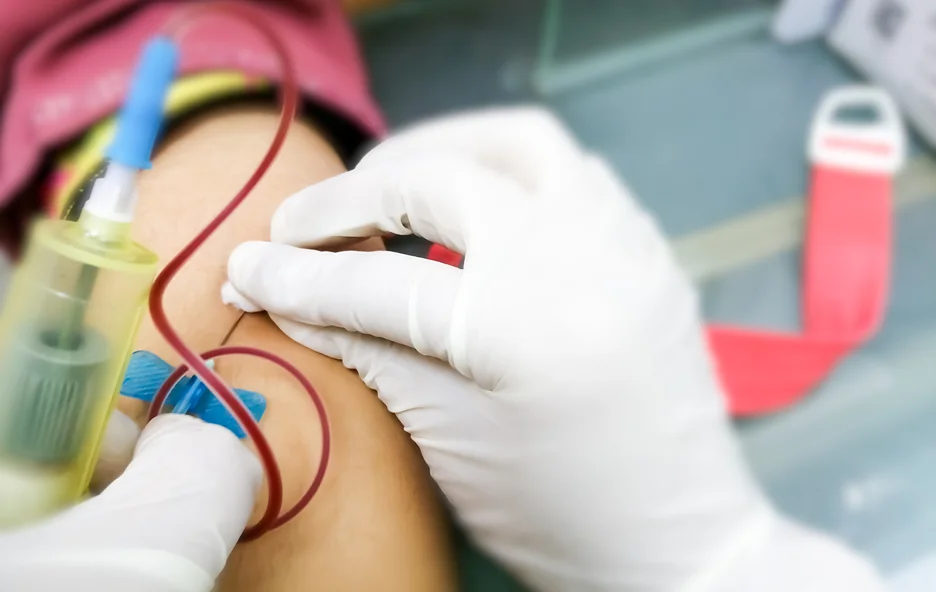
Butterfly needle blood draws, when done correctly, provide a fast and convenient method for collecting venous blood. Attention to proper sterile technique ensures specimens are of high quality for accurate diagnostics while avoiding vein trauma.
With the right supplies from Face Med Store and these evidence-based steps, clinics can hone their phlebotomy procedures.
Stop by our shop and view our inventory of medical-grade phlebotomy equipment now!
